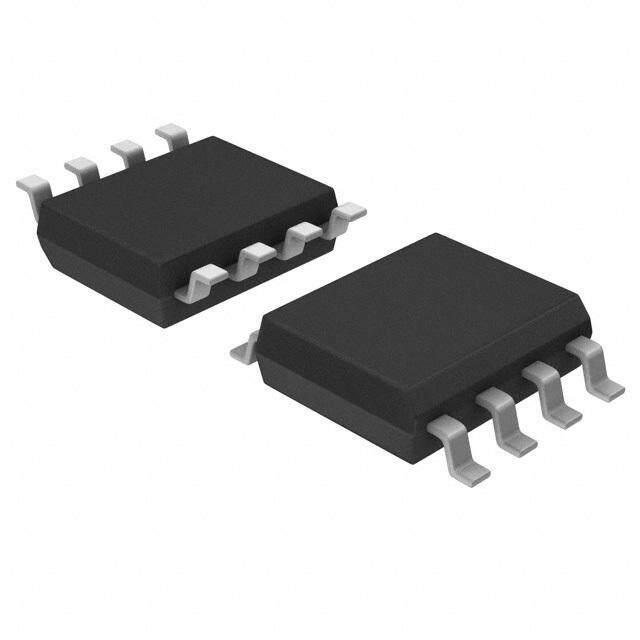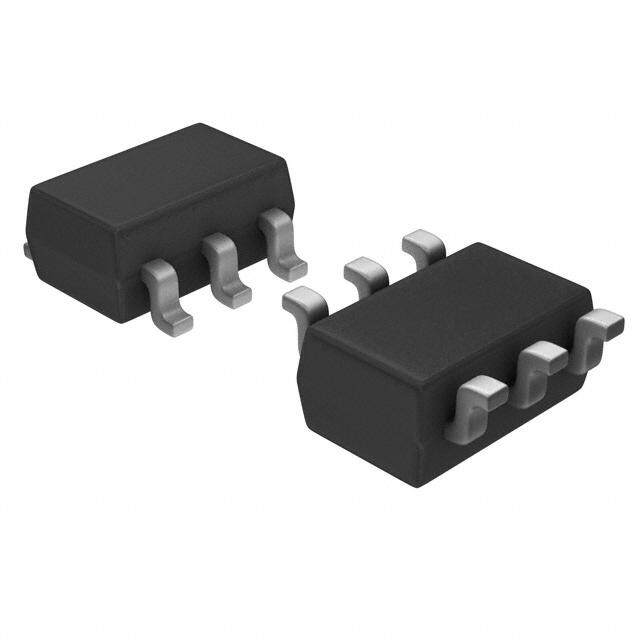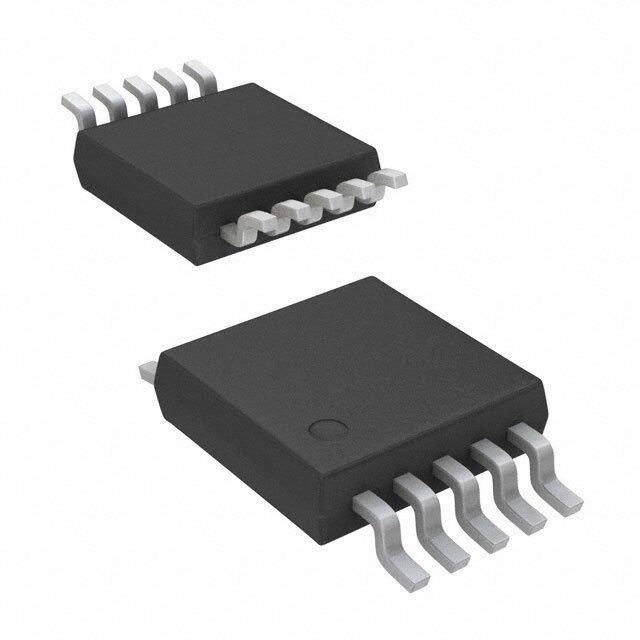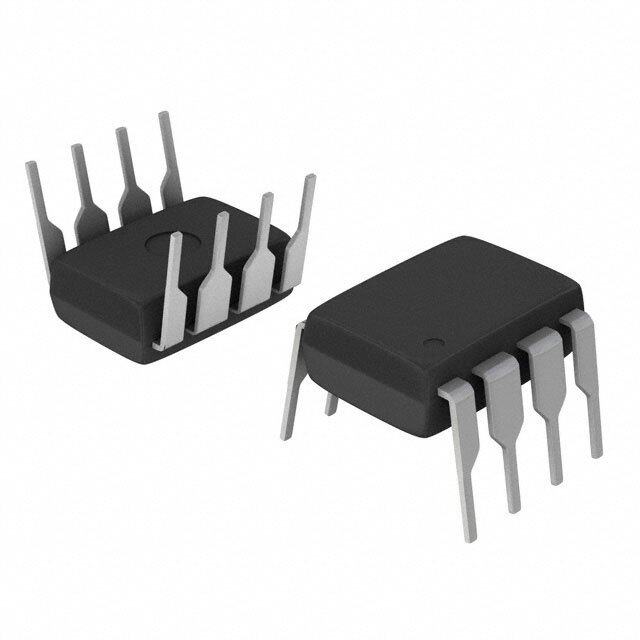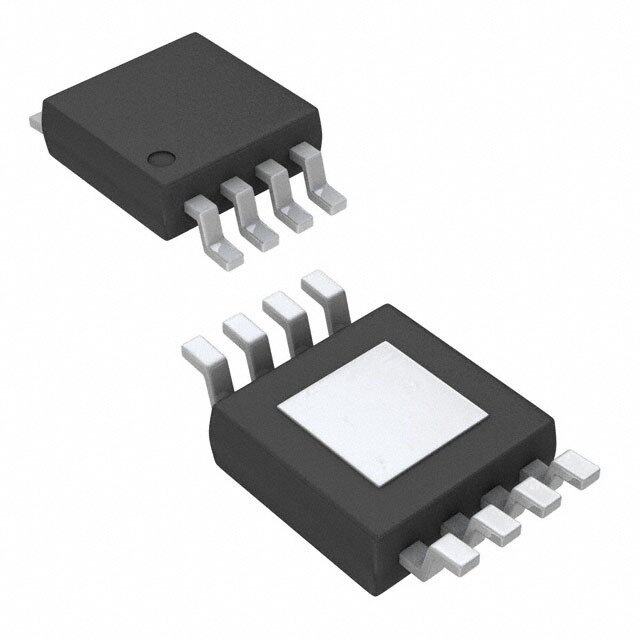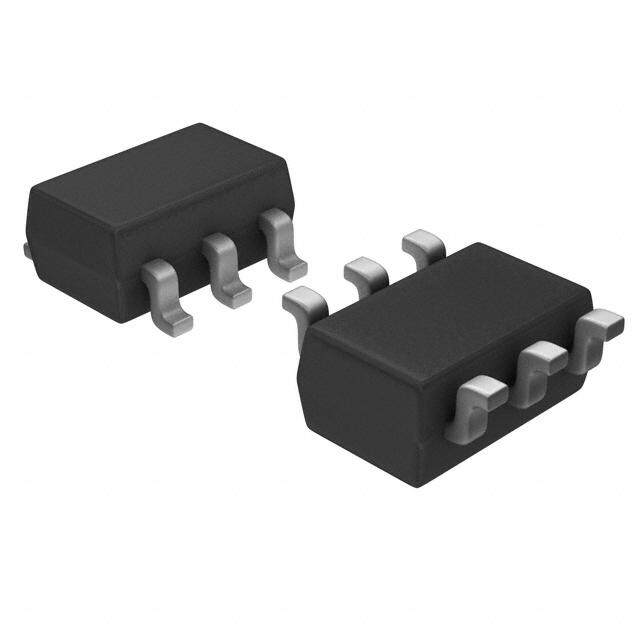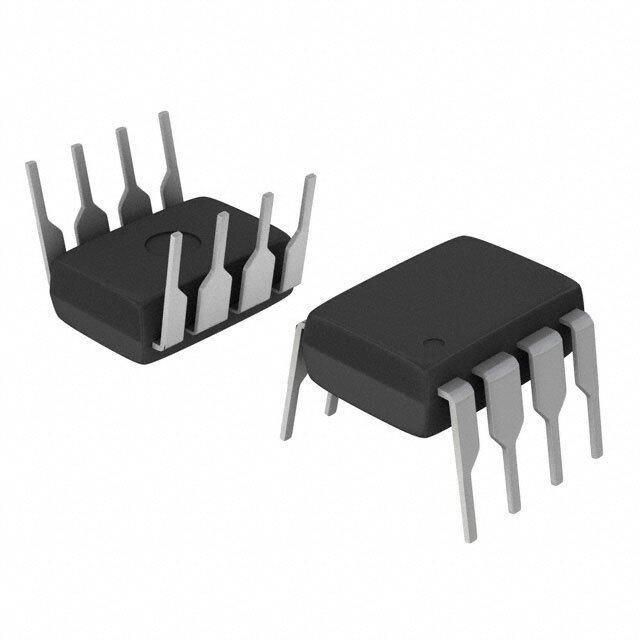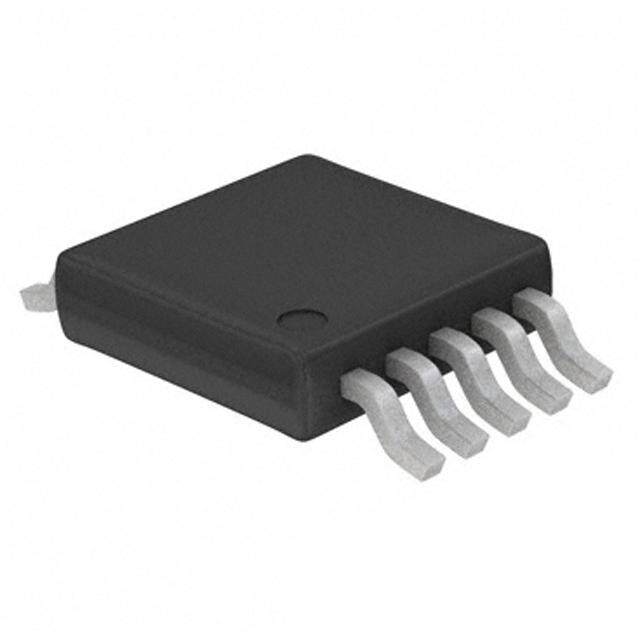ICGOO在线商城 > 集成电路(IC) > 线性 - 放大器 - 仪表,运算放大器,缓冲器放大器 > AD215AY
- 型号: AD215AY
- 制造商: Analog
- 库位|库存: xxxx|xxxx
- 要求:
| 数量阶梯 | 香港交货 | 国内含税 |
| +xxxx | $xxxx | ¥xxxx |
查看当月历史价格
查看今年历史价格
AD215AY产品简介:
ICGOO电子元器件商城为您提供AD215AY由Analog设计生产,在icgoo商城现货销售,并且可以通过原厂、代理商等渠道进行代购。 AD215AY价格参考。AnalogAD215AY封装/规格:线性 - 放大器 - 仪表,运算放大器,缓冲器放大器, 隔离 放大器 1 电路 12-SIP。您可以下载AD215AY参考资料、Datasheet数据手册功能说明书,资料中有AD215AY 详细功能的应用电路图电压和使用方法及教程。
AD215AY 是由 Analog Devices Inc. 生产的一款高性能仪表放大器,适用于需要高精度和低噪声的信号调理应用。以下是该型号的一些典型应用场景: 1. 医疗设备 AD215AY 在医疗设备中广泛应用,特别是在心电图(ECG)、脑电图(EEG)和其他生物电信号采集系统中。这些应用要求极高的输入阻抗、低噪声和高共模抑制比(CMRR),以确保微弱的生理信号能够被准确捕捉和放大。AD215AY 的高增益精度和稳定性使其成为理想选择。 2. 工业自动化与控制 在工业环境中,AD215AY 可用于传感器信号调理,如温度、压力、位移等传感器的信号放大。其宽工作温度范围(-40°C 至 +85°C)和出色的长期稳定性,使得它能够在恶劣的工业环境下可靠工作。此外,其高共模抑制能力有助于减少电磁干扰(EMI)对信号的影响。 3. 精密测量仪器 AD215AY 适用于各种精密测量仪器,如万用表、数据采集系统和测试设备。其低失调电压和温漂特性确保了测量结果的准确性。在这些应用中,AD215AY 可以作为前端放大器,将微弱的输入信号放大到适合后续处理的水平。 4. 音频处理 在专业音频设备中,AD215AY 可用于麦克风前置放大器或音频信号链中的其他关键节点。其低噪声特性和高线性度确保了音频信号的高质量传输,避免失真和噪声引入。 5. 科学实验与研究 在实验室环境中,AD215AY 常用于物理、化学和生物学实验中的信号放大。例如,在光谱分析、振动检测等实验中,AD215AY 能够提供高精度的信号放大,帮助研究人员获取更清晰的数据。 总结 AD215AY 凭借其卓越的性能参数,如高增益精度、低噪声、高共模抑制比和宽工作温度范围,广泛应用于医疗、工业、测量仪器、音频处理和科学研究等领域。它为需要精确信号调理的应用提供了可靠的解决方案。
| 参数 | 数值 |
| -3db带宽 | 120kHz |
| 产品目录 | 集成电路 (IC)半导体 |
| 描述 | IC OPAMP ISOLATION 120KHZ 12SIP隔离放大器 100KHz Bandwidth Iso AMP IC |
| 产品分类 | Linear - Amplifiers - Instrumentation, OP Amps, Buffer Amps集成电路 - IC |
| 品牌 | Analog Devices |
| 产品手册 | |
| 产品图片 |
|
| rohs | 否不符合限制有害物质指令(RoHS)规范要求 |
| 产品系列 | 放大器 IC,隔离放大器,Analog Devices AD215AY- |
| 数据手册 | |
| 产品型号 | AD215AY |
| PCN设计/规格 | |
| 产品培训模块 | http://www.digikey.cn/PTM/IndividualPTM.page?site=cn&lang=zhs&ptm=30008http://www.digikey.cn/PTM/IndividualPTM.page?site=cn&lang=zhs&ptm=26202 |
| 产品种类 | 隔离放大器 |
| 供应商器件封装 | 12-SIP |
| 共模抑制比—最小值 | 100 dB |
| 包装 | 管件 |
| 压摆率 | 6 V/µs |
| 可用增益调整 | 1 V/V to 10 V/V |
| 商标 | Analog Devices |
| 增益带宽积 | - |
| 安装类型 | 通孔 |
| 安装风格 | Through Hole |
| 封装 | Tube |
| 封装/外壳 | 44-SIP,12 引线,偏移引线 |
| 封装/箱体 | SIP |
| 工作温度 | -40°C ~ 85°C |
| 工作温度范围 | - 40 C to + 85 C |
| 工作电源电压 | 15 V |
| 工厂包装数量 | 8 |
| 带宽 | 120 kHz |
| 放大器类型 | 隔离 |
| 标准包装 | 1 |
| 电压-电源,单/双 (±) | ±14.25 V ~ 17 V |
| 电压-输入失调 | 400µV |
| 电流-电源 | 40mA |
| 电流-输入偏置 | 300pA |
| 电流-输出/通道 | 5mA |
| 电源电流 | 40 mA |
| 电路数 | 1 |
| 系列 | AD215 |
| 绝缘电压 | 1500 V |
| 视频文件 | http://www.digikey.cn/classic/video.aspx?PlayerID=1364138032001&width=640&height=505&videoID=2245193153001http://www.digikey.cn/classic/video.aspx?PlayerID=1364138032001&width=640&height=505&videoID=2245193159001 |
| 输入电压范围—最大 | 17 VDC |
| 输入补偿电压 | 0.4 mV |
| 输出类型 | - |
| 通道数量 | 1 Channel |
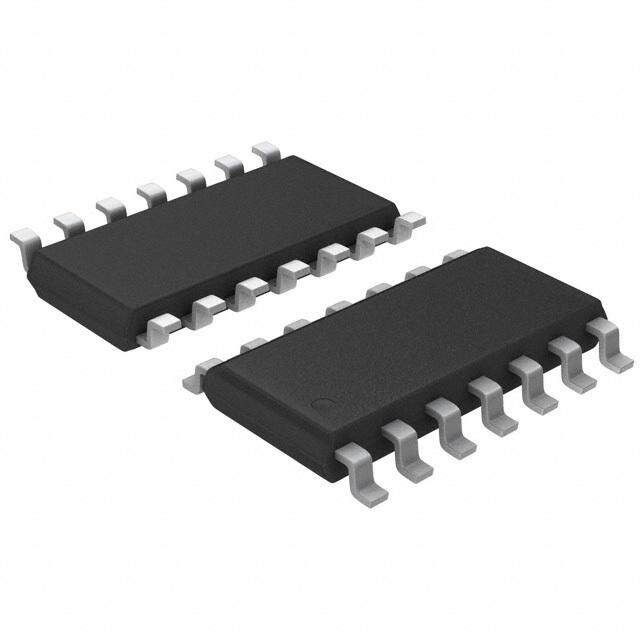

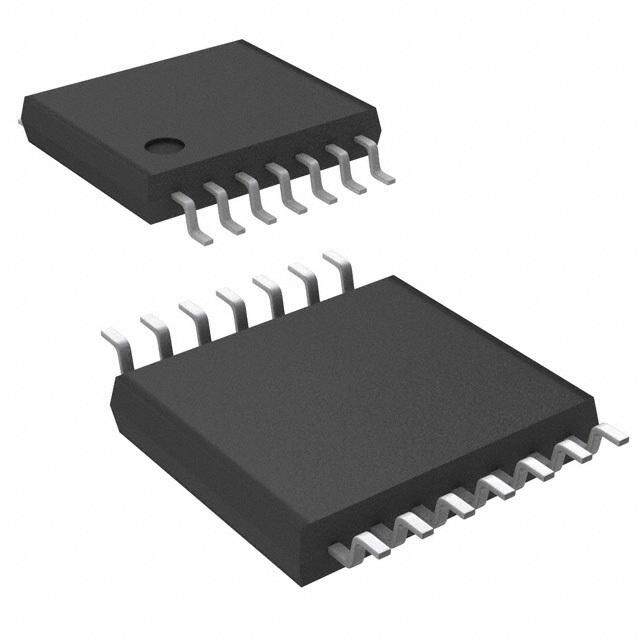
PDF Datasheet 数据手册内容提取
a 120 kHz Bandwidth, Low Distortion, Isolation Amplifier AD215 FEATURES FUNCTIONAL BLOCK DIAGRAM Isolation Voltage Rating: 1,500 V rms Wide Bandwidth: 120 kHz, Full Power (–3 dB) FB 4 Rapid Slew Rate: 6 V/(cid:109)s UNCOMMITTED AD215 Fast Settling Time: 9 (cid:109)s INPUT OP AMP SIGNAL IN– 3 R R Low Harmonic Distortion: –80 dB @ 1 kHz IN+ 1 LOW-PASS 38 OUT HI LWoiwde N Oountlpinueta Rriatnyg:e(cid:54):0(cid:54).01005 %V, min (Buffered) IN COM 2 MODULATOR T1 DEMODULATOR F15IL0TkEHRz OBUUFTFPEURT Built-in Isolated Power Supply: (cid:54)15 V dc @ (cid:54)10 mA 36 TRIM 33kW 0.01µF Performance Rated over –40(cid:56)C to +85(cid:56)C 37 OUT LO POWER APPLICATIONS INCLUDE +VISO 6 ISOLATED 430kHz 42 +15VIN High Speed Data Acquisition Systems DC POWER 44 –15VIN Power Line and Transient Monitors –VISO 5 SUPPLY T2 OSCILLATOR 43 PWR RTN Multichannel Muxed Input Isolation Waveform Recording Instrumentation Power Supply Controls Vibration Analysis GENERAL DESCRIPTION Flexible Input and Buffered Output Stages: An uncommit- The AD215 is a high speed input isolation amplifier designed to ted op amp is provided on the input stage of the AD215 to isolate and amplify wide bandwidth analog signals. The innova- allow for input buffering or amplification and signal condition- tive circuit and transformer design of the AD215 ensures wide- ing. The AD215 also features a buffered output stage to drive band dynamic characteristics while preserving key dc performance low impedance loads and an output voltage trim for zeroing the specifications. output offset where needed. The AD215 provides complete galvanic isolation between the High Accuracy: The AD215 has a typical nonlinearity of input and output of the device including the user-available – 0.005% (B grade) of full-scale range and the total harmonic front-end isolated power supplies. The functionally complete distortion is typically –80 dB at 1 kHz. The AD215 provides design, powered by a – 15 V dc supply, eliminates the need for a designers with complete isolation of the desired signal without user supplied isolated dc/dc converter. This permits the designer loss of signal integrity or quality. to minimize circuit overhead and reduce overall system design Excellent Common-Mode Performance: The AD215BY complexity and component costs. (AD215AY) provides 1,500 V rms (750 V rms) common-mode The design of the AD215 emphasizes maximum flexibility and voltage protection from its input to output. Both grades feature ease of use in a broad range of applications where fast analog a low common-mode capacitance of 4.5 pF inclusive of the signals must be measured under high common-mode voltage dc/dc power isolation. This results in a typical common-mode (CMV) conditions. The AD215 has a – 10 V input/output rejection specification of 105 dB and a low leakage current of range, a specified gain range of 1 V/V to 10 V/V, a buffered out- 2.0m A rms max (240 V rms, 60 Hz). put with offset trim and a user-available isolated front-end Isolated Power: An unregulated isolated power supply of power supply which produces – 15 V dc at – 10 mA. – 15 V dc @ – 10 mA is available at the isolated input port of the AD215. This permits the use of ancillary isolated front-end PRODUCT HIGHLIGHTS amplifiers or signal conditioning components without the need High Speed Dynamic Characteristics: The AD215 features for a separate dc/dc supply. Even the excitation of transducers a typical full-power bandwidth of 120 kHz (100 kHz min), rise can be accomplished in most applications. time of 3 m s and settling time of 9 m s. The high speed perfor- Rated Performance over the –40(cid:56)C to +85(cid:56)C Temperature mance of the AD215 allows for unsurpassed galvanic isolation Range: With an extended industrial temperature range rating, of virtually any wideband dynamic signal. the AD215 is an ideal isolation solution for use in many indus- trial environments. REV.0 Information furnished by Analog Devices is believed to be accurate and © Analog Devices, Inc., 1996 reliable. However, no responsibility is assumed by Analog Devices for its use, nor for any infringements of patents or other rights of third parties which may result from its use. No license is granted by implication or One Technology Way, P.O. Box 9106, Norwood, MA 02062-9106, U.S.A. otherwise under any patent or patent rights of Analog Devices. Tel: 617/329-4700 Fax: 617/326-8703
AD215–SPECIFICATIONS (Typical @ +25(cid:56)C, V = (cid:54)15 V dc, 2 k(cid:86) output load, unless otherwise noted.) S AD215AY/BY Parameter Conditions Min Typ Max Units GAIN Range1 1 10 V/V Error G = 1 V/V, No Load on V – 0.5 – 2 % ISO vs. Temperature 0(cid:176) C to +85(cid:176) C +15 ppm/(cid:176) C –40(cid:176) C to 0(cid:176) C +50 ppm/(cid:176) C vs. Supply Voltage – (14.5 V dc to 16.5 V dc) +100 ppm/V vs. Isolated Supply Load2 +20 ppm/mA Nonlinearity3 AD215BY Grade – 10 V Output Swing, G = 1 V/V – 0.005 – 0.015 % – 10 V Output Swing, G = 10 V/V – 0.01 % AD215AY Grade – 10 V Output Swing, G = 1 V/V – 0.01 – 0.025 % – 10 V Output Swing, G = 10 V/V – 0.025 % INPUT VOLTAGE RATINGS Input Voltage Rating G = 1 V/V – 10 V Maximum Safe Differential Range IN+ or IN–, to IN COM – 15 V CMRR of Input Op Amp 100 dB Isolation Voltage Rating4 Input to Output, AC, 60 Hz AD215BY Grade 100% Tested4 1500 V rms AD215AY Grade 100% Tested4 750 V rms IMRR (Isolation Mode Rejection Ratio) R £ 100 W (IN+ & IN–), G = 1 V/V, 60 Hz 120 dB S R £ 100 W (IN+ & IN–), G = 1 V/V, 1 kHz 100 dB S R £ 100 W (IN+ & IN–), G = 1 V/V, 10 kHz 80 dB S R £ 1 kW (IN+ & IN–), G = 1 V/V, 60 Hz 105 dB S R £ 1 kW (IN+ & IN–), G = 1 V/V, 1 kHz 85 dB S R £ 1 kW (IN+ & IN–), G = 1 V/V, 10 kHz 65 dB S Leakage Current, Input to Output 240 V rms, 60 Hz 2 m A rms INPUT IMPEDANCE Differential G = 1 V/V 16 MW Common Mode 2(cid:105)4.5 GW (cid:105)pF INPUT OFFSET VOLTAGE Initial @ +25(cid:176) C – 0.4 – 2.0 mV vs. Temperature 0(cid:176) C to +85(cid:176) C – 2 m V/(cid:176) C –40(cid:176) C to 0(cid:176) C – 20 m V/(cid:176) C OUTPUT OFFSET VOLTAGE Initial @ +25(cid:176) C, Trimmable to Zero 0 –35 –80 mV vs. Temperature 0(cid:176) C to +85(cid:176) C – 30 m V/(cid:176) C –40(cid:176) C to 0(cid:176) C – 80 m V/(cid:176) C vs. Supply Voltage – 350 m V/V vs. Isolated Supply Load2 –35 m V/mA INPUT BIAS CURRENT Initial @ +25(cid:176) C 300 nA vs. Temperature –40(cid:176) C to +85(cid:176) C – 400 nA INPUT DIFFERENCE CURRENT Initial @ +25(cid:176) C – 3 nA vs. Temperature –40(cid:176) C to +85(cid:176) C – 40 nA INPUT VOLTAGE NOISE Input Voltage Noise Frequency > 10 Hz 20 nV/(cid:214) Hz DYNAMIC RESPONSE (2 kW Load) Full Signal Bandwidth (–3 dB) G = 1 V/V, 20 V pk-pk Signal 100 120 kHz Transport Delay6 2.2 m s Slew Rate – 10 V Output Swing 6 V/m s Rise Time 10% to 90%, – 10 V Output Swing 3 m s –2– REV. 0
AD215 AD215AY/BY Parameter Conditions Min Typ Max Units DYNAMIC RESPONSE (2 kW Load) Cont. Settling Time to – 0.10%, – 10 V Output Swing 9 m s Overshoot 1 % Harmonic Distortion Components @ 1 kHz –80 dB @ 10 kHz –65 dB Overload Recovery Time G = 1 V/V, – 15 V Drive 5 m s Output Overload Recovery Time G > 5 10 m s RATED OUTPUT Voltage Out HI to Out LO – 10 V Current 2 kW Load – 5 mA Max Capacitive Load 500 pF Output Resistance 1 W Output Ripple and Noise7 1 MHz Bandwidth 10 mV pk-pk 50 kHz Bandwidth 2.5 mV pk-pk ISOLATED POWER OUTPUT8 Voltage No Load – 14.25 – 15 – 17.25 V vs. Temperature 0(cid:176) C to +85(cid:176) C +20 mV/(cid:176) C –40(cid:176) C to 0(cid:176) C +25 mV/(cid:176) C Current at Rated Supply Voltage2, 9 – 10 mA Regulation No Load to Full Load –90 mV/V Line Regulation 290 mV/V Ripple 1 MHz Bandwidth, No Load2 50 mV rms POWER SUPPLY Supply Voltage Rated Performance – 14.5 – 15 – 16.5 V dc Operating10 – 14.25 – 17 V dc Current Operating (+15 V dc/–15 V dc Supplies) +40/–18 mA TEMPERATURE RANGE Rated Performance –40 +85 (cid:176) C Storage –40 +85 (cid:176) C NOTES 11The gain range of the AD215 is specified from 1 to 10 V/V. The AD215 can also be used with gains of up to 100 V/V. With a gain of 100 V/V a 20% reduction in the –3 dB bandwidth specification occurs and the nonlinearity degrades to – 0.02% typical. 12When the isolated supply load exceeds – 1 mA, external filter capacitors are required in order to ensure that the gain, offset, and nonlinearity specifications are pre- served and to maintain the isolated supply full load ripple below the specified 50 mV rms. A value of 6.8 m F is recommended. 13Nonlinearity is specified as a percent (of full-scale range) deviation from a best straight line. 14The isolation barrier (and rating) of every AD215 is 100% tested in production using a 5 second partial discharge test with a failure detection threshold of 150 pC. All “B” grade devices are tested with a minimum voltage of 1,800 V rms. All “A” grade devices are tested with a minimum voltage of 850 V rms. 15The AD215 should be allowed to warm up for approximately 10 minutes before any gain and/or offset adjustments are made. 16Equivalent to a 0.8 degrees phase shift. 17With the – 15 V dc power supply pins bypassed by 2.2 m F capacitors at the AD215 pins. 18Caution: The AD215 design does not provide short circuit protection of its isolated power supply. A current limiting resistor may be placed in series with the isolated power terminals and the load in order to protect the supply against inadvertent shorts. 19With an input power supply voltage greater than or equal – 15 V dc, the AD215 may supply up to – 15 mA from the isolated power supplies. 10Voltages less than 14.25 V dc may cause the AD215 to cease operating properly. Voltages greater than – 17.5 V dc may damage the internal components of the AD215 and consequently should not be used. Specifications subject to change without notice. CAUTION ESD (electrostatic discharge) sensitive device. Electrostatic charges as high as 4000 V readily WARNING! accumulate on the human body and test equipment and can discharge without detection. Although the AD215 features proprietary ESD protection circuitry, permanent damage may occur on devices subjected to high energy electrostatic discharges. Therefore, proper ESD precautions are recommended to avoid performance degradation or loss of functionality. ESD SENSITIVE DEVICE REV. 0 –3–
AD215 FB 4 AD215 UNCOMMITTED INPUT OP AMP SIGNAL IN– 3 R R 38 OUT HI IN+ 1 LOW-PASS MODULATOR DEMODULATOR FILTER 150kHz IN COM 2 OUTPUT T1 BUFFER 36 TRIM 33kW 0.01µF 37 OUT LO POWER +VISO 6 ISOLATED 430kHz 42 +15VIN DC POWER 44 –15VIN –VISO 5 SUPPLY OSCILLATOR 43 PWR RTN T2 Figure 1.Functional Block Diagram PIN CONFIGURATIONS INSIDE THE AD215 The AD215 is a fully self-contained analog signal and power isolation solution. It employs a double-balanced amplitude 1 3 5 37 43 modulation technique to perform transformer coupling of sig- 2 4 6 BOTFTOOOMTP VRIEINWT OF 3638 4244 nals ranging in frequency from true dc values to those having frequencies of 120 kHz or less. To generate the power supplies used for the isolated front-end AD215 PIN DESIGNATIONS circuitry, an internal clock oscillator drives the primary winding of the integral dc/dc power supply’s transformer, T2. The Pin Designation Function resultant voltage developed across the secondary winding is 1 IN+ Noninverting Input then rectified and filtered for use as the isolated power supply. 2 IN COM Input Common This built-in isolated dc/dc converter provides sufficient power 3 IN– Inverting Input for both the internal isolated circuit elements of the AD215 as 4 FB Amplifier Feedback well as any ancillary components supplied by the user. It saves 5 –VISO OUT Isolated –15 V dc Power Supply onboard space and component cost where additional amplifica- 6 +VISO OUT Isolated +15 V dc Power Supply tion or signal conditioning is required. 36 TRIM Output Offset Trim Adjust After an input signal is amplified by the uncommitted op amp, 37 OUT LO Output Low it is modulated at a carrier frequency of approximately 430 kHz 38 OUT HI Output High and applied across the primary winding of the signal isolation 42 +15 V +15 V dc Power IN transformer T1. 43 PWR RTN – 15 V dc Power Supply Common 44 –15 V –15 V dc Power The resultant signal induced on the secondary winding of the IN transformer is then demodulated and filtered using a low-pass Bessel response filter set at a frequency of 150 kHz. The func- ORDERING GUIDE tion of the filter reconstructs the original signal as it appears on the input. Model Temperature Range V Nonlinearity* CMV The signal transformer design and construction allow non- AD215AY –40(cid:176) C to +85(cid:176) C 750 0.01% linearity to be independent of both the specified temperature AD215BY –40(cid:176) C to +85(cid:176) C 1500 0.005% and gain ranges. *Typical @ +25(cid:176)C, G = 1 V/V. After complete reconstruction, the signal is subjected to an off- set trim stage and final output buffer. The trim circuit allows the designer flexibility to adjust for any offset as desired. –4– REV. 0
Performance Characteristics–AD215 0.10 150 140 0.05 130 0 RS £ 100W 120 % R – –0.05 dB110 N ERRO–0.10 CMR – 100 AI G 90 –0.15 RS £ 1kW 80 –0.20 70 –0.25 60 –40 –20 0 20 40 60 80 100 10 100 1k 10k 100k TEMPERATURE – (cid:176)C FREQUENCY – Hz Figure 2.Gain Error vs. Temperature Figure 4.Typical Common-Mode Rejection vs. Frequency 1 0 –1 1mV –2 100 –3 NLINEARITY – mV–+011 90 +–00..000044 ONLINEARITY – % GAIN – dB–––––45678 G = 1 O 10 N N 0% –9 G = 10 –10 –11 –10 –8 –6 –4 –2 0 2 4 6 8 10 –12 G = 100 OUTPUT VOLTAGE – Volts 0.1 1.0 10 100 1000 INPUT SIGNAL FREQUENCY – kHz Figure 5.Normalized Gain as a Function of Signal Figure 3.Gain Nonlinearity vs. Output Voltage (G = 1 V/V) Frequency TRANSPORTDELAY – µs 3102 GGG === 111000 0 s e gre 45 e D – T HIF 90 G = 1 E S G =10 S A PH130 G = 100 10 20 30 40 50 60 70 80 90 100 110 120 FREQUENCY – kHz Figure 6.Phase Shift and Transport Delay vs. Frequency REV. 0 –5–
AD215–Performance Characteristics 60 56 19000 OUTPUT 4582 0.33µF BYPASS CAPS 100mV 44 p p- 40 mV 36 10 5V I(N+1P0UVT STEP) PPLE – 3228 1.0µF BYPASS CAPS 0% RI 24 5µs V ISO1260 3.3µF BYPASS CAPS OVERSHOOT 12 8 10µF BYPASS CAPS 4 0 Figure 7a.Overshoot to a Full-Scale Step Input 0 1 2 3 4 5 6 7 8 9 10 VISO LOAD – mA (G = 1 V/V) Figure 9.– V Supply Ripple vs. Load ISO 16.2 100 90 16.0 5V I(N–1P0UVT STEP) 15.8 VS = – 15V dc V15.6 01%0 100mV OUTPUT –V – ISO15.4 NOTE: 5µs 15.2 THE GAIN AND OFFSET ERRORS WILL INCREASE UNDERSHOOT WHEN THE 15.0 ISOLATED POWER SUPPLY LOAD EXCEEDS 14.8 – 10mA Figure 7b.Undershoot to a Full-Scale Input 5 10 15 (G = 1 V/V) VISO LOAD – – mA Figure 10. – V Supply Voltage vs. Load ISO 5V 10µs 100 90 10 0% – 10V, 15kHz STEP OUTPUT RESPONSE (G=1) Figure 8.Output Response to Full-Scale Step Input (G = 1 V/V) –6– REV. 0
AD215 POWERING THE AD215 Noninverting Configuration for Gain Greater Than Unity The AD215 is powered by a bipolar – 15 V dc power supply Figure 13 shows how to achieve a gain greater than one while connected as shown in Figure 11. External bypass capacitors continuing to preserve a very high input impedance. A recom- should be provided in bused applications. Note that a small mended PC board layout for multichannel applications is shown signal-related current (50 mA/V ) will flow out of the OUT OUT in Figure 20b. LO pin (Pin 37). Therefore, the OUT LO terminals should be bused together and referenced at a single “Analog Star Ground” to the – 15 V dc supply common as illustrated Figure 11. RIN = 2kW IN+ 1 OUT HI IN– OUTPUT 38 AD32715NOUT LON AD327151OUATN LAOL1OG STAR GROUNSDIG COM VSIGNAL RG RF C47FpF 432 FINB COM CBIFRUITACLRFTNUFIEDMIETRRR,Y 37OUT LO TRIM 42 42 +VIN +15V dc AD215 36 COM 43 2.2µF PWR PWR RTN RTN 43 43 COM 2.2µF 44 44 –VIN –15V dc Figure 13.Noninverting Input Configuration for Gain > 1 V/V NTH CHANNEL 1ST CHANNEL In this circuit, the gain equation is as follows: V = (1 + R /R ) · V Figure 11.Typical Power Supply Connections O F G SIG where: Power Supply Voltage Considerations The rated performance of the AD215 remains unaffected for V = Output Voltage (V) O power supply voltages in the – 14.5 V dc to – 16.5 V dc range. V = Input Signal Voltage (V) SIG Voltages below – 14.25 V dc may cause the AD215 to cease op- R = Feedback Resistor Value (W ) F erating properly. R = Gain Resistor Value (W ) G Note: Power supply voltages greater than – 17.5 V dc may damage The values for resistors R and R are subject to the following F G the internal components and consequently should not be used. constraints: • The total impedance of the gain network should be less than USING THE AD215 10 kW . Unity Gain Input Configuration • The current drawn in R is less than 1 mA at – 10 V. Note that The basic unity gain configuration for input signals of up to F – 10 V is shown in Figure 12. for each mA drawn by the feedback resistor, the isolated power supply drive capability decreases by 1 mA. RIN = 2kW IN+ • Amplifier gain is set by the feedback (RF) and gain resistor 1 IN– 38 OUT HI (RG). VSIGNAL 3 FB OUBTUPFUFET RF IALNTEDR, It is recommended that RF is bypassed with a 47 pF capacitor as 4 IN COM TRIM CIRCUITRY OUT LO shown. 2 37 TRIM 36 Note: The 2 kW input resistor (RIN) in series with the input AD215 COM signal source and the IN+ terminal in Figures 12 and 13 is rec- 43 ommended to limit the current at the input terminals of the to PWR RTN 5.0 mA when the AD215 is not powered. Figure 12.Basic Unity Gain REV. 0 –7–
AD215 Compensating the Uncommitted Input Op Amp GAIN AND OFFSET ADJUSTMENTS The open-loop gain and phase versus frequency for the uncom- General Comments mitted input op amp are given in Figure 14. These curves can The AD215 features an output stage TRIM pin useful for zero- be used to determine appropriate values for the feedback resis- ing the output offset voltage through use of user supplied circuitry. tor (R ) and compensation capacitor (C ) to ensure frequency F F When gain and offset adjustments are required, the actual com- stability when reactive or nonlinear components are used. pensation circuit ultimately used depends on the following: • The input configuration mode of the isolation amplifier (non- 25 80 inverting or inverting). 20 100 • The placement of any adjusting potentiometer (on the N – dB 1150 PHASE 112400grees isolator’s input or output side). GE VOLTAGE GAI –505 GAIN 112680000CESS PHASE – De A•• sGrT eaoas gi isneetnn oaserdu rnjarueel s trtswumtaloeebr:nkilt iasty ts htinhoe ut hilsdeo bglaaeti onarc ’acsdo ijmnupsptulmits.ehnetd, apto tthene tgioamine-steerttsing AVERA––1105 222400Ø, EX sahnodu iltds bime ploecdaatnecde assh coluolsde baes pkeopsst iblolwe .t o A thdeju isstomlaetnotr ’rsa inngpeust –20 260 should also be kept to a minimum since their resolution and –25 280 stability is dependent upon the actual potentiometers used. 100k 1M 10M 100M FREQUENCY – Hz • Output adjustments may be necessary where adjusting poten- tiometers placed near the input would present a hazard to the Figure 14.Open-Loop Gain and Frequency Response user due to the presence of high common-mode voltages dur- ing the adjustment procedure. Inverting, Summing or Current Input Configuration Figure 14 shows how the AD215 can measure currents or sum • It is recommended that input offset adjustments are made currents or voltages. prior to gain adjustments. • The AD215 should be allowed to warm up for approximately FB 10 minutes before gain or offset adjustments are made. 4 RF C47FpF IN– Input Gain Adjustments for Noninverting Mode 3 OUT HI Figure 16 shows a suggested noninverting gain adjustment cir- IN+ OUTPUT 38 IS RS2 RS1 1 BFUILFTFEERR, cuit. Note that the gain adjustment potentiometer RP is incorpo- VS2 VS1 AND rated into the gain-setting resistor network. IN COM TRIM OUT LO 2 CIRCUITRY 37 AD215 TRIM 36 COM RIN = 2kW 1 IINN+– 38OUT HI 43 PRWTNR VSIGNAL RPRC 0.47pCFF 43 FB OBFUUIALFTTNFPEDEURRT, Figure 15.Noninverting Summing/Current Configuration RG RF IN COM CIRTCRUIMITRY OUT LO 2 37 For this circuit, the output voltage equation is: TRIM 36 VO = –RF · (IS + VS1/RS1 + VS2/RS2 + ...) AD215 43 COM where: PWR RTN V = Output Voltage (V) V = Input Voltage Signal 1 (V) S1 Figure 16.Gain Adjustment for Noninverting Configuration V = Input Voltage Signal 2 (V) I S2 = Input Current Source (A) For a – 1% trim range: S RRFS1 == FInepeudtb Sacigkn Rale s1i sStooru r(cW e) R(1e0si sktWan, ctey p(W) ) (RP » 1kW ),RC » 0.02· RRG·+RRF R = Input Signal 2 Source Resistance (W ) G F S2 The circuit of Figure 15 can also be used when the input signal is larger than the – 10 V input range of the isolator. For example, in Figure 15, if only V , R and R were connected as shown S1 S1 F with the solid lines, the input voltage span of V could accom- S1 modate up to – 50 V when R = 10 kW and R = 50 kW . F S1 –8– REV. 0
AD215 Input Gain Adjustments for the Inverting Mode USING ISOLATED POWER Figure 17 shows a suggested inverting gain adjustment circuit. Each AD215 provides an unregulated, isolated bipolar power In this circuit, gain adjustment is made using a potentiometer source of – 15 V dc @ – 10 mA, referred to the input common. (R ) in the feedback loop. The adjustments are effective for all This source may be used to power various ancillary components P such as signal conditioning and/or adjustment circuitry, refer- gains in the 1 to 10 V/V range. ences, op amps or remote transducers. Figure 19 shows typical connections. RIN RC RF FB 4 CF 1kRWF 47pF 13 IINN+– OFUILTTPEURT, 38OUT HI 13 IIFNNB+– OBFUUILFTTFPEEURRT, AD21538 OUT HI VSIGNAL BUAFNFDER 4 IN COM TARNIDM OUT LO IN COM TRIM OUT LO 2 CIRCUITRY 37 2 CIRCUITRY 37 TRIM AD215 TRIM 36 COM LOAD 6+VISO +VS 4326 +15V dc 43 PRWTNR 11..55kkWW 66..88CCµµFF12 –VISO ISSOULDPACPTLEYD PL4OO3AS0WTCkOIEHLRRz- PR–WTVNRS 43 22..22µµFF COM 5 44 –15V dc Figure 17.Gain Adjustment for Inverting Configuration For an approximate – 1% gain trim range, Figure 19.Using the Isolated Power Supplies R · R R = IN F X R +R PCB LAYOUT FOR MULTICHANNEL APPLICATIONS IN F The pin out of the AD215 has been designed to easily facilitate and select multichannel applications. Figure 20a shows a recommended RC = 0.02 · RIN circuit board layout for a unity gain configuration. while R < 10 kW PWR F RTN CF = 47 pF +15V dc –15V dc SUPPLY BYPASS Note: R and R should have matched temperature coefficient CAPACITORS FOR F IN 2.2µF EVERY FOUR drift characteristics. 2.2µF AD215s Output Offset Adjustments 36 38 42 44 OUT HI0 Figure 18 illustrates one method of adjusting the output offset 37 TRIM 0 voltage. Since the AD215 exhibits a nominal output offset of 43 –35 mV, the circuit shown was chosen to yield an offset correc- 36 38 42 44 OUT HI1 tion of 0 mV to +73 mV. This results in a total output offset 37 TRIM 1 range of approximately –35 mV to +38 mV. 43 36 38 42 44 OUT HI2 TRIM 2 ANALOG IN– 37 STAR 3 OUT HI 43 GROUND IN+ 38 412 FINB COM LOF(1WIL5T0-PkEAWRS),S OBUUFT3F3PkEUWRT 0.0T1RµIMF 361RMTW R10Pk2W R10S0kW 3637 38 2.2µ4F243 424.2µF OTRUITM H 3I3 OUT LO 37 +15VIN 42 +15V dc Figure 20a.PCB Layout for Unity Gain AD215 2.2µF PWR RTN 43 COM 2.2µF CAUTION –15VIN 44 –15V dc The AD215 design does not provide short-circuit protection of its isolated power supply. A current limiting resistor should be Figure 18.Output Offset Adjustment Circuit placed in series with the supply terminals and the load in order to protect against inadvertent shorts. Output Gain Adjustments Since the output amplifier stage of the AD215 is fixed at unity gain, any adjustments can be made only in a subsequent stage. REV. 0 –9–
AD215 When gain setting resistors are used, 0.325" channel centers can AC Transducer Applications still be achieved as shown in Figure 20b. In applications such as vibration analysis, where the user must acquire and process the spectral content of a sensor’s signal RF rather than its “dc” level, the wideband characteristics of the CF 2 4 6 AD215 prove most useful. Key specifications for ac transducer IN IN– CVOIS+MOVISO RG 1 3 5 atipopnl.i cSaitniocen st hine ctlruadnes dbuacnedrw midatyh ,b esl emwe crhataen aicnadll yh abromnodnedic odristor- welded to the object under test, isolation is typically required to RF C2 C1 CF 2 4 6 eliminate ground loops as well as protect the electronics used in IN IN CO+MVISO RG 1 3 5 tghaeg ed actirac aucitq eumisiptiloonyi nsygs ttheme A. FDig2u1r5e a2n3d sah ohwigsh a snp eiseodl aotpeder sattriaoinnal –VISO amplifier (AD744). C1, C2 ARE VISO FILTER CAPACITORS. C2 C1 RF, RG ARE FEEDBACK, GAIN RESISTORS. To alleviate the need for an instrumentation amplifier, the CF IS A FEEDBACK BYPASS CAPACITOR. bridge is powered by a bipolar excitation source. Under this ap- proach the common-mode voltage is – V which is typically SPAN Figure 20b.PCB Layout for Gain Greater than Unity only a few millivolts, rather than the V (cid:52) 2 that would be EXC achieved with a unipolar excitation source and Wheatstone APPLICATIONS EXAMPLES bridge configuration. Motor Control Using two strain gages with a gage factor of 3 mV/V and a Figure 21 shows an AD215 used in a dc motor control applica- – 1.2 V excitation signal, a – 6.6 mV output signal will result. A tion. Its excellent phase characteristics and wide bandwidth are gain setting of 454 will scale this low level signal to – 3 V, which ideal for this type of application. can then be digitized by a high speed, 100 kHz sampling ADC ENCODER FEEDBACK such as the AD7870. AD215 COMMOMTOARND 431 G = 1 38CIS–OMO1MO0LVMTAOATVRENCDD CMOONTTORORLIMOTORMOTOR SHAFT ROEPSTOOIRLCVAELR TcAuDhite2r yl1o 5two, wvbohel itpcahog wec eaernxe cdsiut faprtopiomlyn utihsp e ut isose o–dl a1tt0oe dmp epArom woifte irts hoseula pftrpeodline pts- oeownf detr hc eairt- –10 VOLTS 37 UNIT q TACHOMETER 2 OUT LO ENCODER – 15 V. The bridge draws only 3.5 mA, leaving sufficient cur- COM rent to power the micropower dual BiFET (400 m A quiescent current) and the high speed AD744 BiFET amplifier (4 mA Figure 21.Motor Control Application quiescent current). Multichannel Data Acquisition The current drive capabilities of the AD215’s bipolar – 15 V dc isolated power supply is more than adequate to meet the modest – 800 m A supply current requirements for the AD7502 multi- plexer. Digital isolation techniques should be employed to iso- late the Enable (EN), A0 and A1 logic control signals. EN A1 A0 AD7502 (–15V) DTL/TTL TO CMOS LEVEL TRANSLATOR GND DECODER/DRIVER (+15V) AD215 FB G = 1 4 IN– 3 OUT HI S1 – S4 S5 – S8 IN+ 38 1 IN COM OUT LO 2 37 +VISO 6 42 +15V 6.8µF COM 2 44 –15V 6.8µF –VISO PWR 5 43 RTN Figure 22.Multichannel Data Acquisition Application –10– REV. 0
AD215 +VISO +VISO 220W Q1 2N3904 –VISO 1/2 AD648 +1.2V 1MW FB +VISO 10kW 3355+–00eeWW 2MW AD744 431 IINN+– MOD DEMOD OBFUUIALFTNTFPEDEURRT 3387OOUUTT HLIO 6.8kW –1.2V 2.2pF 500W 9.76kW 36 TRIM AD215 220W Q2 1/2 2N3906 453kW +VISO AD589 AD648 1kW 6 42 +15V –VISO –VISO C1 6.8µF COM ISOLATED 430kHz 2 DC POWER 44 –15V C2 6.8µF –VISO SUPPLY OSC 43PWR 5 RTN Figure 23.Strain Gage Signal Conditioning Application REV. 0 –11–
AD215 OUTLINE DIMENSIONS Dimensions shown in inches and (mm). AD215 SIP PACKAGE 0.325 (8.3) 6 2.480 (63.0) MAX MAX 9 4/ – 0 2 – (02.08.175) (0M2.18A.44X0) 2134 C 00..002105 ((00..54)) 00.0.1924 ((32..04)) TYP 30(cid:176) TYP 0.16 (4.1) 0.16 (4.1) 0.010 0.165 (4.2) 2.15 (54.6) (0.25) 0.135 (3.4) 0.2 0.250 (5.1) (6.4) 0.1 (2.5) 0.1 (2.5) 0.05 (1.3) 1.50 (38.1) 0.11 (2.8) 0M(.83A.23X5) 12 34 56 BOTFTOOOMTP VRIEINWT OF 363378 442344 0(2.1.5) 0.712 (18.2) 0.712 (18.2) 0.11 (2.8) 0.022 (0.56) CL NOTE: PINS MEASURE 0.022 (0.56) x 0.010 (0.25) PRIOR TO TINNING. TINNING MAY ADD UP TO 3 mils (0.003") TO THESE DIMENSIONS. A. S. U. N D I E T N RI P –12– REV. 0
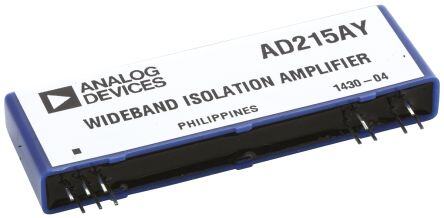
 Datasheet下载
Datasheet下载


